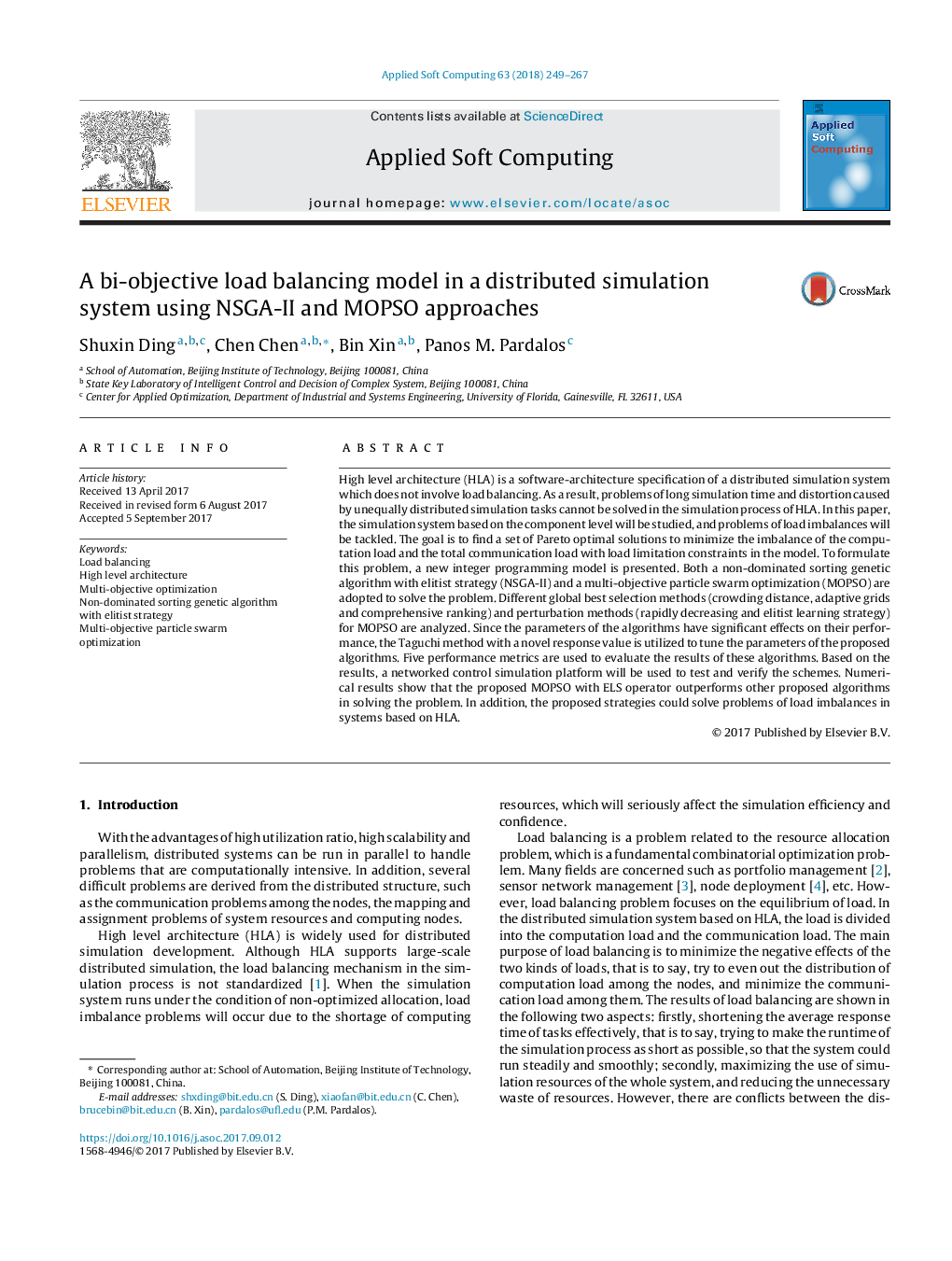| Article ID | Journal | Published Year | Pages | File Type |
|---|---|---|---|---|
| 6904175 | Applied Soft Computing | 2018 | 19 Pages |
Abstract
High level architecture (HLA) is a software-architecture specification of a distributed simulation system which does not involve load balancing. As a result, problems of long simulation time and distortion caused by unequally distributed simulation tasks cannot be solved in the simulation process of HLA. In this paper, the simulation system based on the component level will be studied, and problems of load imbalances will be tackled. The goal is to find a set of Pareto optimal solutions to minimize the imbalance of the computation load and the total communication load with load limitation constraints in the model. To formulate this problem, a new integer programming model is presented. Both a non-dominated sorting genetic algorithm with elitist strategy (NSGA-II) and a multi-objective particle swarm optimization (MOPSO) are adopted to solve the problem. Different global best selection methods (crowding distance, adaptive grids and comprehensive ranking) and perturbation methods (rapidly decreasing and elitist learning strategy) for MOPSO are analyzed. Since the parameters of the algorithms have significant effects on their performance, the Taguchi method with a novel response value is utilized to tune the parameters of the proposed algorithms. Five performance metrics are used to evaluate the results of these algorithms. Based on the results, a networked control simulation platform will be used to test and verify the schemes. Numerical results show that the proposed MOPSO with ELS operator outperforms other proposed algorithms in solving the problem. In addition, the proposed strategies could solve problems of load imbalances in systems based on HLA.
Keywords
Related Topics
Physical Sciences and Engineering
Computer Science
Computer Science Applications
Authors
Shuxin Ding, Chen Chen, Bin Xin, Panos M. Pardalos,
